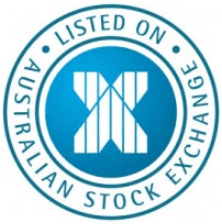
By Evan Lucas for Chris Weston, Chief Market Strategist at IG Markets
A fresh round of Japanese CPI data did little to instil any sort of relief rally on the Nikkei in the morning trade.
However, the index drifted higher in the afternoon session as more stimulus bets increased, but on the whole the reactions were benign, as was the reaction from the JPY.
All the prints match the consensus forecasts, with total CPI coming in at 1.5% year-on-year from 1.4% in January and CPI excluding food, which is the key metric watched by the Bank of Japan (BoJ) and the Abe government, was unchanged from January; coming in at 1.3%.
Breaking down the CPI figure; the results show that inflation in Japan continues to be driven mainly by food and energy. Energy rose to 5.8% year-on-year and considering it contributes around 0.5 percentage points to the overall read this shows that the country is still struggling to break out of deflation.
Domestic demand is creeping as inflation was seen across the consumer spaces, however the growth was only moderate. This shows that the three arrows of Abenomics are having some impact on domestic behaviour. However, there are concerns around its sustainability as household spending unexpectedly dropped by 2.5%; the biggest fall since 2011 and well off the consensus expectation of 0.1%.
Expectations are for the Japanese economy to contract in the second quarter as planned tax increases take effect in April. The sale tax increase will add 300 basis points to the current rate, taking the tax rate to 8% – that will increase inflation on the top line. However, the unexpected shrinking of household spending may be Japanese consumers already taking steps to safeguard themselves from these measures.
Consensus forecasts predict Japanese inflation will ease to around 1.2% in the next six months as these tax hikes take effect particularly on discretionary. For Abenomics to work the slowdown in inflation has to reverse and if these forecast come to fruition we could see the BoJ being forced back into the market by increasing its already staggering stimulus package.
What could be concluded from this news and from trading during Q1 is that the market seems to be losing patience with the BoJ. Having seen the removal of the two-year 2% inflation target to just reaching 2% with an open time line, a BoJ that has continued to sit on its hands and now an inflation gauge that looks like it will contract, the movements in the yen (+3% this year) and the Nikkei (-12% year-to-date) suggest the market is start to sell the Abenomics story. The question now is whether it forces the BoJ to act.
Fresh Fedspeak
Having seen new Fed Chair Janet Yellen catching the market off-guard with her quantification of a considerable amount, Chicago Fed President Charles Evans reiterated this call; stating that rates will rise ‘at least six months’ after the asset purchase program ends.
A known dove, Evans believes rates are likely to rise in the second half of next year but he would prefer if it was later than this as he believes inflation remains too low.
There is no doubt the two-pronged mantra of the Fed – unemployment and inflation has probably been skewed towards unemployment. However; with jobless claims at the lowest levels since November last year expectations heading into next week’s employment data is building for good print from the non-farm payroll and unemployment rate.
Inflation however, is one area that QE has yet to really impact. Confidence is returning to the US market and growth is now visible having seen a stronger Q4 GDP print which showed the US grew at 2.6% on an annualised basis (but this is still below historical trend growth and consensus).
Evans wants to see growth at 3% for the rest of 2014 and believes the Fed funds rate is more likely to be around 1.25% at the end of CY16, which is 100 basis points less than the projections released last week and only 25 basis points higher than the forecast rate at the end of CY15. What is clear from the Fedspeak of the past 24 hours (Bullard and Evans) is dovish members are moving away from their über dove status to more in-line with a neutral outlook. It again means that on a longer term fundamental perspective we will see USD strength, Fed fund rate strength and the unwinding of the US carry trade.